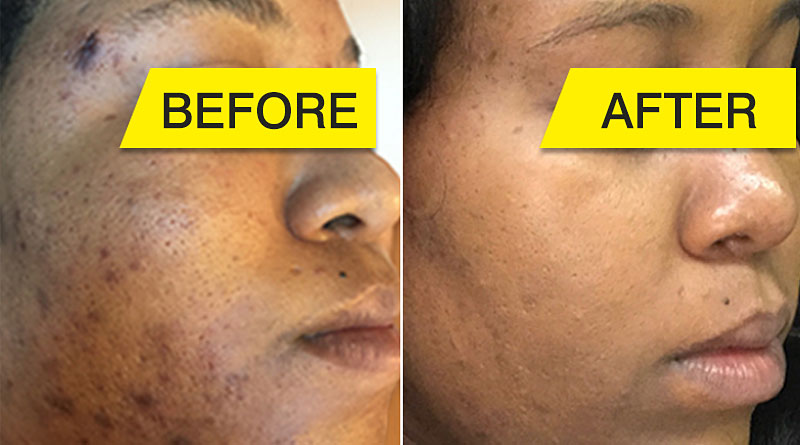Flawless skin is the dream of many. But hyperpigmentation, a common skin condition, can throw your dreams of having even toned, flawless skin down the drain. Worry not as our guide would explain everything about hyperpigmentation including how to get rid of it. We specifically cover:-
Discoloration of skin, dark patches, dark spots—this is what hyperpigmentation looks like. A common issue suffered by many, it can occur anywhere on your body but mostly it targets the face. Hyperpigmentation shows no discrimination and affects all skin types. However, it affects people with dark skin more than those with lighter skin.
It can get worse when exposed to sun. Although it looks harmless, yet in some cases it can indicate an underlying illness. Therefore, you should always pay attention to any of such changes in your skin even if it is something minor.

1) Age Spots
Age spots are black or brown spots which are triggered by a number of factors including ageing and sun exposure. They are mostly found on face, hands, shoulders, arms, and other areas which are exposed to sun. They are also known as liver spots, or solar lentigines. Age spots are harmless and don’t need any treatment. But, people prefer to get rid of them or try to make their appearance less noticeable.
2) Freckles And Sun Spots
Freckles and sun spots are small darker patches of skin which occur as a response to sun exposure. Our skin produces melanin as a response to being exposed to sun. That is the skin’s natural method of protecting itself against the sun’s harmful UV rays. Sun spots can occur anywhere on the body and at any age due to spending long hours in the sun.
3) Melasma
Melasma is a skin condition triggered by hormones and affects women more than men. In this condition, hyperpigmentation appears on forehead, nose, cheeks, and the area around lips. Also called chloasma, it is most common during pregnancy when hormones go haywire. This is one of those hyperpigmentation types which usually goes away on its own. As soon as the hormones come back in a balanced state, chances are your skin will too.
Hyperpigmentation Causes
Hyperpigmentation occurs as a result of many factors. Some of the hyperpigmentation causes are listed below:
1. Sun Exposure
The no. 1 hyperpigmentation cause is long exposures to the sun. On such an exposure, skin produces more melanin to protect itself and thus, results in the formation of dark spots and patches on exposed areas.
2. Pollution
Pollution is another lead cause of many skin problems including hyperpigmentation. The harmful pollutants not only harm our health but can also irritate the skin to trigger excess melanin production.
3. Age
As you age, your skin starts losing melanocytes, the melanin producing cells in skin. Whatever cells are left, they increase in size and continue producing melanin. The distribution of pigmentation becomes uneven and focused to form what are known as age spots. The appearance of age spots increases after the age of 40.
4. Hormones
Hormones are the cause behind a particular type of hyperpigmentation, i.e. Melasma. As we mentioned earlier, this condition affects women more than men. An imbalance of estrogen and progesterone—the female sex hormones—can trigger excess production of melanin. Such an imbalance can occur during pregnancy or due to the use of birth control or as a side effect of hormone treatments.
5. Genetics
Genetics can be another one of the hyperpigmentation causes. If your mother or father has it and any of their parents before them bore the marks, then chances are you will have to be an unwilling bearer of hyperpigmentation too.
6. Skin Inflammation
Skin inflammation causes dark spots after the injury or inflammation heals. The healed portion becomes darker than the surrounding skin. Even the healing of a pimple can leave behind a nasty spot. Skin inflammation is one of the leading hyperpigmentation causes especially in people with dark skin.
7. Reaction To Drug Use
Hyperpigmentation can also occur as a result of using certain medications such as chemotherapy drugs, antibiotics, antimalarial drugs, tricyclic antidepressants, among others.
8. Medical Condition
Hyperpigmentation is harmless but it can sometimes be a result of an underlying disease such as Addison’s disease or hemochromatosis. Both of these are serious conditions and have hyperpigmentation as one of their symptoms.